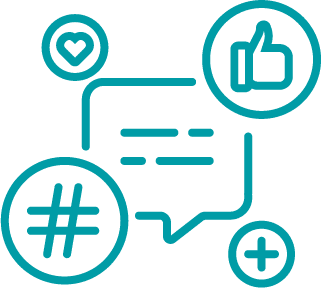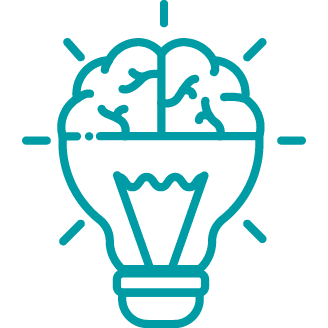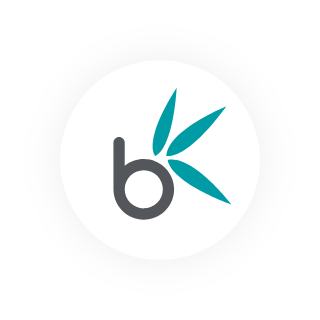How is Each Department Using AI?
We’ve come a long way since the days of Smarter Child, one of the world’s first AI chatbots that went from being a basic Q&A and support programme to a verbal punching bag and practice wall for creative insults. For many of us, it was our first interaction with a conversational AI.
Today, we’re looking at AI programmes that can handle an almost infinite number of requests, regardless of complexity. AI programmes can now create ‘original’ images and content ideas from textual descriptions, spot errors in code, and condense complex information into bitesize summaries.
AI is showing signs of being able to perform more tactical tasks that require less human nuance to maximise efficiency. Although we’re still in the very early stages of incorporating AI into our workflow, we thought we’d give an update on where each department stands regarding AI and how we envision using it going forward.
Paid Media Team

From the Paid Media side, we dabble with ChatGPT to help create headlines and descriptions for ads. Due to responsive search ads needing 15 headlines, creativity can wane and ChatGPT can help generate different angles to use.
With that said, it can also be used as the opposite of the above. Due to the nature of ChatGPT being essentially an aggregator of the most common and used language. It can be used to see what not to write.
For example, asking it to “list 10 headlines for a responsive search ad that is selling a high-end bed brand” may give you a list of 10 very generic headlines which most of your competitors are using. This can then show you essentially what not to write, allowing you to narrow the pool of ideas and push in a more creative direction.
Paid Social Media Team

The effectiveness of AI in marketing depends on the questions fed to it and the skill set of the user manipulating it. However, this can introduce unknown biases, both from the users themselves and from the sources that the AI is driven by. We use it with caution, recognising that it can support ideation and alternative language use while understanding that it’s crucial we ensure its responses are crafted to align with the brand’s tone of voice and values.
Paid social media can help cut through the noise, helping us form punchy, short, and impactful copy ideas. However, the output must be refined to the brand’s style to build resonance.
We’re also using machine learning to craft long-term strategies, but human interaction is required to hone media buying strategies that suit different business goals and audience data.
AI can produce a framework for a Paid Social strategy, but marketing professionals need to use their business acumen and insights to make decisions on spend, campaign types, and application.
Social Media Team

Our scheduling software now includes an AI caption writing element that helps us generate ideas for ad copy. It’s also great for simplifying complex topics for B2C and broader audiences. However, using AI for anything beyond generating ideas can be slower and may require additional effort to adapt the suggestions to fit the brand’s tone and style.
Organic social media is shifting towards value-adding, storytelling, and brand-building, particularly on Instagram. The goal is to increase time spent on posts and build a relationship with the audience to create a community. This is, in part, a reaction to an increase in ads across platforms and more AI.
As a result, organic content now requires a more creative approach to writing, telling the brand’s unique story, giving advice they haven’t seen before, and sharing a brand’s experience. This cannot be replicated by AI as it just recreates and amalgamates what already exists.
Organic audiences want to hear something new, learn something new, and feel a connection. This is the foundation of ‘Social Networking’. It’s human, and AI cannot provide unique content that will lead to growth and engagement at this time.
Design and Development Team

We are at the beginning stages of incorporating AI into our creative process. The tools available at the moment are not at a point where they can become an integral part of our workflow, but it is a glimpse of what is to come. As improvements are made to AI platforms, it will not only become a part of the creative process, but will also one day change the process.
AI will help speed up the workflow by creating unique content, generating ideas, helping with research, and creating custom imagery. This will allow the designer to free their mind of these tasks and concentrate on the actual design. In turn, this will help to improve key design facets like layout and typography, as the designer will have more time to spend on their perfection.
Another potential area to utilise AI in content creation is storyboarding. Understanding tasks, key messages, and brand values can allow you to generate ideas and craft a storyboard for assets like video ads. As with most uses, AI design requires implementation and alignment with the
brand values and the single message we’re trying to convey with the asset.
SEO
One way AI is used in the SEO team is through mass data analysis, which involves keyword and topic clustering to identify trends and opportunities for optimisation.
Another key use of AI in SEO is audience research, which enables businesses to quickly and effectively gather insights into their target audience.
We also use it to reverse engineer itself. With the inclusion of Bing Chat in its browser, which has access to the Internet, we are more aware than ever that users may use it instead of traditional search for terms like “best plumber london” by looking at how it chooses which plumbers to display we can formulate a plan of action for our clients.
Content Team

ChatGPT does a fairly good job of providing basic article ideas. It’s also, ironically, quite good at suggesting topics to avoid because of how generic and banal its ideas can be. The key is being able to cherry-pick what ideas you find useful and adapting this into your content.
When it comes to editing and proofreading, ChatGPT can do a quick sweep to iron out grammar, phrase, or tense errors. Like Grammarly, GrammarlyGO, MS spell check, or any
other hammer, ChatGPT adds another tool to the belt of efficiency.
We’ve also started to experiment with using ChatGPT to conduct research. Its answers can be surprisingly specific. This is, of course, based on the prompt it’s given and the access it has to certain information. For example, if we were to ask it to find statistics on how many pizzas are burned in restaurants across Slough each year, it might struggle with that. However, if we asked it to provide statistics surrounding rising house prices in the UK, it would likely come back with a range of useful numbers.
Ultimately, it saves us time trawling through Google, hunting down super-specific statistics. Importantly, we’d still cross-reference these stats to make sure that it isn’t lying (which it does, a lot).
Onto prompts. Learning how to create specific prompts to get the answer you want is becoming a skill in itself. The more specific the prompt, the better ChatGPT’s output will be. In some cases, it’s able to provide a wealth of useful information but again, this information needs to be fact-checked. This is especially true for long-form copy.
Is ChatGPT a magic wand for creating persuasive, tonally-accurate and high-converting copy? No. Is it a shortcut to creating a brand that people trust? Definitely not. However, it can become one of the most helpful tools in your writing arsenal if you use it the right way.
PR Team

AI has started to help us speed up research time and gather insights more efficiently. AI is quickly becoming a helpful tool from media monitoring and outlet research to identifying key industry influencers and analysing story trends.
However, it’s important to note that AI is not infallible, and checking the information gathered via other sources is still crucial. While AI can speed up the research process, it can also make mistakes that may impact the accuracy of the insights gathered.
Data & Engineering Team

Given that AI is mostly just a highly advanced machine learning algorithm, various forms of AI have been used for a long time in tech, including in code editors to help web devs write code faster and more accurately.
However, the speed and flexibility of the latest neural-network ML algorithms, including ChatGPT, are offering devs new ways to increase the speed and accuracy of their work. They do this in two main ways.
- Most obviously, they allows devs to create code snippets with a few simple prompts rather than trawling through code documentation and then manually typing code. Of course, these snippets might need tweaking to ensure they are fit for purpose but the grunt work is done by the AI. This results in a significant time saving.
- Secondly, AI’s can take a code snippet and be asked to debug or explain how it works. This is particularly useful for junior devs who can answer a question about a snippet quickly and without needing to bother their manager and also for digging into legacy or poorly scripted code which may confuse even an experienced eye.
Currently, these tools are very much a tool for devs and we are a way off AI’s being able to code whole pages or even full page elements. However, we will be keeping a sharp eye on this quickly evolving space and making sure to harness the efficiency savings wherever possible.
Tech Team

Currently, AI is being employed as more of a search engine, assisting users who know what they’re seeking but may not be familiar with the exact coding syntax and additional settings. When ChatGPT generates code snippets, users with a strong grasp of language and a clear understanding of their search objectives can seamlessly integrate the code into their projects.
While ChatGPT may not be ideal for large-scale projects or extensive code pages, it proves effective for modules and self-contained code blocks. Paired with our team’s knowledge of their desired outcome and using the generated code as guidance, ChatGPT is a powerful tool to help development.
Going Forward
AI has come a long way in a surprisingly short space of time. Going forward, we’re hoping to continue learning more about its capabilities and how it can enhance our workflow and provide a better service to our clients.


